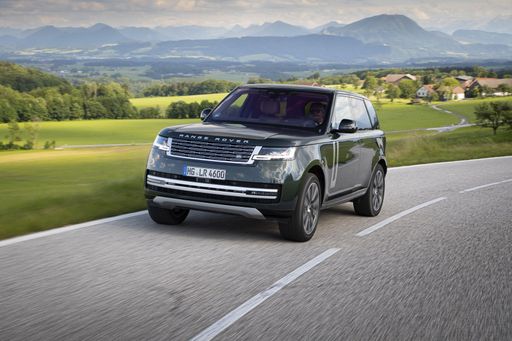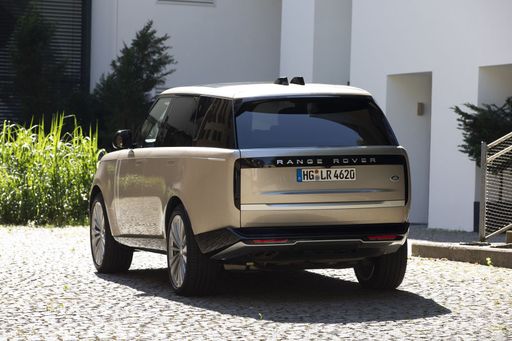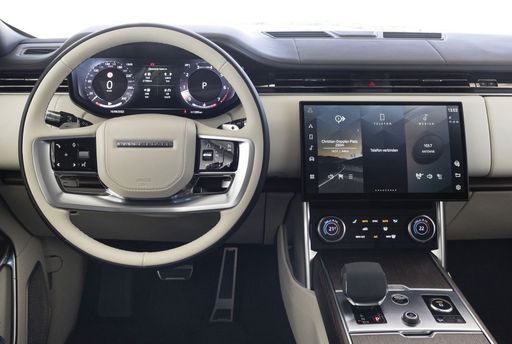Land Rover Range Rover vs Kia EV5 – Which one offers the better deal?
Two cars, one duel: Land Rover Range Rover meets Kia EV5.
Which one wins in performance, efficiency and value for money? Find out now!
Costs and Efficiency:
When it comes to price and running costs, the biggest differences usually appear. This is often where you see which car fits your budget better in the long run.
Kia EV5 has a significantly advantage in terms of price – it starts at 39400 £, while the Land Rover Range Rover costs 122700 £. That’s a price difference of around 83322 £.
As for range, the Kia EV5 performs significantly better – achieving up to 530 km, about 413 km more than the Land Rover Range Rover.
Engine and Performance:
Power, torque and acceleration say a lot about how a car feels on the road. This is where you see which model delivers more driving dynamics.
When it comes to engine power, the Land Rover Range Rover has a significantly edge – offering 615 HP compared to 218 HP. That’s roughly 397 HP more horsepower.
In acceleration from 0 to 100 km/h, the Land Rover Range Rover is clearly quicker – completing the sprint in 4.50 s, while the Kia EV5 takes 8.40 s. That’s about 3.90 s faster.
In terms of top speed, the Land Rover Range Rover performs evident better – reaching 261 km/h, while the Kia EV5 tops out at 165 km/h. The difference is around 96 km/h.
There’s also a difference in torque: Land Rover Range Rover pulls decisively stronger with 800 Nm compared to 295 Nm. That’s about 505 Nm difference.
Space and Everyday Use:
Beyond pure performance, interior space and usability matter most in daily life. This is where you see which car is more practical and versatile.
Seats: Land Rover Range Rover offers distinct more seating capacity – 7 vs 5.
In curb weight, Kia EV5 is evident lighter – 2069 kg compared to 2504 kg. The difference is around 435 kg.
In terms of boot space, the Land Rover Range Rover offers clearly perceptible more room – 818 L compared to 566 L. That’s a difference of about 252 L.
In maximum load capacity, the Land Rover Range Rover performs noticeable better – up to 2176 L, which is about 526 L more than the Kia EV5.
When it comes to payload, Land Rover Range Rover clearly perceptible takes the win – 846 kg compared to 511 kg. That’s a difference of about 335 kg.
Who comes out on top?
Overall, the Land Rover Range Rover shows itself to be leaves the rival little chance and secures the title of DriveDuel Champion.
It convinces with the more balanced overall package and proves to be the more versatile choice for everyday use.

Land Rover Range Rover
Land Rover Range Rover
The Land Rover Range Rover epitomises luxury and capability in the realms of off-road vehicles. Its elegant design seamlessly marries sophistication with ruggedness, making it equally suitable for urban environments and challenging terrains. Inside, passengers are treated to a plush interior with premium materials and cutting-edge technology that ensure a comfortable and connected driving experience.
details @ media.landrover.com
@ media.landrover.com
 @ media.landrover.com
@ media.landrover.com
 @ media.landrover.com
@ media.landrover.com
 @ media.landrover.com
@ media.landrover.com
Kia EV5
Kia's EV5 is an exciting entry into the electric SUV market, showcasing the brand's commitment to sustainable mobility. With its modern design and advanced technology features, the EV5 promises to deliver a smooth and environmentally friendly driving experience. The interior offers a spacious and comfortable ride, making it an appealing choice for families and eco-conscious drivers alike.
details

|
|
|
|
|
Costs and Consumption |
|
|---|---|
|
Price
122700 - 244700 £
|
Price
39400 - 45400 £
|
|
Consumption L/100km
2.7 - 11.7 L
|
Consumption L/100km
-
|
|
Consumption kWh/100km
-
|
Consumption kWh/100km
16.9 - 17.8 kWh
|
|
Electric Range
116 - 117 km
|
Electric Range
505 - 530 km
|
|
Battery Capacity
31.80 kWh
|
Battery Capacity
81.40 kWh
|
|
co2
62 - 265 g/km
|
co2
0 g/km
|
|
Fuel tank capacity
71 - 90 L
|
Fuel tank capacity
-
|
Dimensions and Body |
|
|---|---|
|
Body Type
Off-Roader
|
Body Type
SUV
|
|
Seats
5 - 7
|
Seats
5
|
|
Doors
5
|
Doors
5
|
|
Curb weight
2504 - 2810 kg
|
Curb weight
2069 kg
|
|
Trunk capacity
212 - 818 L
|
Trunk capacity
566 L
|
|
Length
5052 - 5258 mm
|
Length
4610 mm
|
|
Width
2047 mm
|
Width
1875 mm
|
|
Height
1870 mm
|
Height
1675 mm
|
|
Max trunk capacity
1841 - 2176 L
|
Max trunk capacity
1650 L
|
|
Payload
589 - 846 kg
|
Payload
511 kg
|
Engine and Performance |
|
|---|---|
|
Engine Type
Plugin Hybrid, Petrol MHEV, Diesel MHEV
|
Engine Type
Electric
|
|
Transmission
Automatic
|
Transmission
Automatic
|
|
Transmission Detail
Automatic Gearbox
|
Transmission Detail
Reduction Gearbox
|
|
Drive Type
All-Wheel Drive
|
Drive Type
Front-Wheel Drive
|
|
Power HP
300 - 615 HP
|
Power HP
218 HP
|
|
Acceleration 0-100km/h
4.5 - 6.6 s
|
Acceleration 0-100km/h
8.40 s
|
|
Max Speed
218 - 261 km/h
|
Max Speed
165 km/h
|
|
Torque
650 - 800 Nm
|
Torque
295 Nm
|
|
Number of Cylinders
6 - 8
|
Number of Cylinders
-
|
|
Power kW
221 - 452 kW
|
Power kW
160 kW
|
|
Engine capacity
2997 - 4395 cm3
|
Engine capacity
-
|
General |
|
|---|---|
|
Model Year
2025
|
Model Year
2025
|
|
CO2 Efficiency Class
B, G
|
CO2 Efficiency Class
A
|
|
Brand
Land Rover
|
Brand
Kia
|
What drive types are available for the Land Rover Range Rover?
Available configurations include All-Wheel Drive.
The prices and data displayed are estimates based on German list prices and may vary by country. This information is not legally binding.
